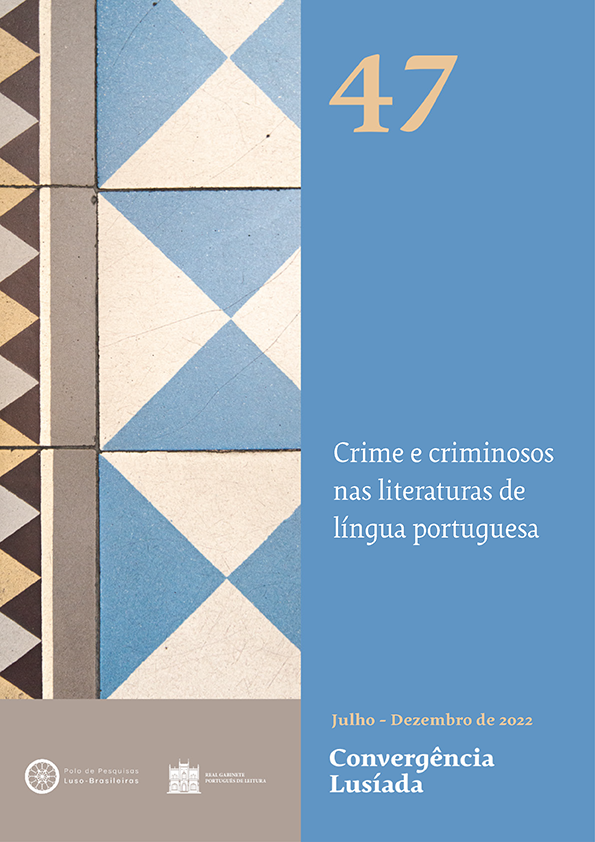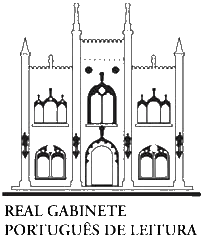Dois modos de narrar a criança criminosa na literatura brasileira novecentista: Jorge Amado e Murilo Rubião
DOI:
https://doi.org/10.37508/rcl.2022.n47a478Palavras-chave:
Gótico, narrador, Jorge Amado, Murilo Rubião, criançasResumo
A partir de trabalhos críticos como os de Steven Bruhm (2006) e Robin Wood (2020), este artigo reflete sobre as relações entre a infância e o crime em obras novecentistas tributárias das poéticas negativas. Partimos da hipótese de que há dois modos de narração preponderantes: (i) narradores denunciadores, que evidenciam a monstruosidade infantil como uma consequência de problemas sociais; e (ii) narradores impassíveis, que, ao não oferecerem justificativas explícitas para a criminalidade infantil, tendem a apresentá-la como inata. Para ilustrarmos essas premissas, tomamos o romance Capitães da Areia (1937), de Jorge Amado, e o conto “A Casa do Girassol Vermelho” (1947), de Murilo Rubião.
Downloads
Referências
AMADO, Jorge. Capitães da Areia. São Paulo: Companhia das Letras, 2009.
BASTOS, Alcmeno. Murilo Rubião e a questão da causalidade. In: BATALHA, Maria Cristina; GARCÍA, Flavio (org.). Murilo Rubião 20 anos depois de sua morte. Rio de Janeiro: EdUERJ, 2013. p. 67-82.
BLOOM, Paul. O que nos faz bons ou maus. Tradução de Eduardo Rieche. Rio de Janeiro: Best Seller, 2014.
BRUHM, Steven. Nightmare on Sesame Street: or, the Self-Possessed Child. Gothic Studies, Edinburgh, v. 8, n. 2, p. 98-113, nov. 2006. DOI: https://doi.org/10.7227/GS.8.2.7
DOSSE, François. A saga dos intelectuais franceses, v.1; à prova da história (1944-1968). Tradução de Guilherme João de Freitas Teixeira. São Paulo: Estação Liberdade, 2021.
GEORGIEVA, Margarita. The Gothic Child. London: Palmgrave Macmillan, 2013. DOI: https://doi.org/10.1057/9781137306074
GREGORY, Kristen. Exceptional and Destructive: The Dangerous Child and the Atom Bomb in Postwar Science Fiction. In: _____. FLEGEL, Monica; PARKES, Christopher (org). Cruel Children in Popular Texts and Cultures. Cham: Palgrave Macmillan, 2018. p. 153-168. DOI: https://doi.org/10.1007/978-3-319-72275-7_8
JOSIOWICZ, Alejandra J. La cruzada de los niños: intelectuales, infancia y modernidad literaria en América Latina. Bernal: Universidade Nacional de Quilmes, 2018.
JUDT, Tony. O mal ronda a terra: um tratado sobre as insatisfações do presente. Tradução de Celso Nogueira. Rio de Janeiro: Objetiva, 2011.
KOLBUSZWESKA, Zofia. The Purloined Child: American Identity and Representations of Childhood in American Literature (1851-2000). Lublin: Wydawnictwo KUL, 2007.
MURPHY, Bernice M. Horror Fiction from the Decline of Universal Horror to the Rise of the Psycho Killer. In: ALDANA REYES, Xavier (ed.). Horror: a literary history. London: British Library, 2016. p. 131-158.
OATES, Joyce Carol. Killer Kids. The New York Review of Books, November 6, 1997, s.p. Disponível em: <https://www.nybooks.com/articles/1997/11/06/ killer-kids/> Acesso em 12 de agosto de 2021.
PUNTER, David. Technogenealogies: Family Secrets. In: _____. The Gothic Condition: Terror, History and the Psyche. Wales: Wales University Press, 2016. p. 87-94.
RUBIÃO, Murilo. A Casa do Girassol Vermelho. In: _____. Contos reunidos. São Paulo: Editora Ática, 2005. p. 15-24.
SARTRE, Jean-Paul. Que é a literatura? Tradução de Carlos Felipe Moisés. São Paulo: Editora Ática, 2004.
WEINSTOCK, Jeffrey Andrew. Invisible Monsters: Vision, Horror, and Contemporary Culture. In: _____. (org.). Monster Theory Reader. London: University of Minnesota Press, 2020. p. 358-373. DOI: https://doi.org/10.5749/j.ctvtv937f.22
WOOD, Robin. An Introduction to the American Horror Film. In: WEINSTOCK, Jeffrey Andrew (org.). Monster Theory Reader. London: University of Minnesota Press, 2020. p. 108-135. DOI: https://doi.org/10.5749/j.ctvtv937f.9
Downloads
Publicado
Como Citar
Edição
Seção
Licença
Os autores que publicam nesta revista concordam com os seguintes termos:
a. Autores mantêm os direitos autorais e concedem à revista o direito de primeira publicação, com o trabalho simultaneamente licenciado sob a Licença Creative Commons Atribuição NãoComercial (CC-BY-NC 4.0) que permite o compartilhamento do trabalho com reconhecimento da autoria e publicação inicial nesta revista.
b. Autores têm autorização para assumir contratos adicionais separadamente, para distribuição não-exclusiva da versão do trabalho publicada nesta revista (ex.: publicar em repositório institucional ou como capítulo de livro), com reconhecimento de autoria e publicação inicial nesta revista.
c. Autores têm permissão e são estimulados a publicar e distribuir seu trabalho online (ex.: em repositórios institucionais ou na sua página pessoal) a qualquer ponto antes ou durante o processo editorial, já que isso pode gerar alterações produtivas, bem como aumentar o impacto e a citação do trabalho publicado.

A Revista Convergência Lusíada utiliza uma Licença Creative Commons - Atribuição-NãoComercial 4.0 Internacional.









